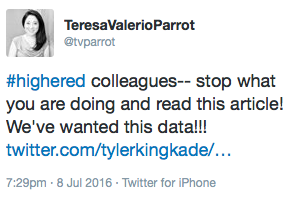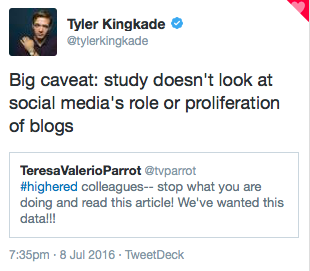You have /5 articles left.
Sign up for a free account or log in.
It’s natural to read a headline about a college or university crisis and wonder if and how the institution will be impacted. It’s easy to track leadership turnover, loss of accreditation and other concrete and immediate impacts. But, as an industry, we’ve relied on anecdotal information to discuss how crisis impacts reputational indicators like enrollment.
Last week, the Harvard Business School released a working paper that explored this topic and provided campus communications professionals with concrete information to take to our presidents and campus leadership; information that helps to backstop our assertions that problems must be dealt with proactively before they become crises.
The working paper notes:
Scandals with more than five mentions in the New York Times lead to a 9 percent drop in applications at the college the following year. Colleges with scandals covered by long-form magazine articles receive 10 percent fewer applications the following year. To put this into context, a long-form article decreases a college’s number of applications roughly as much as falling 10 places in the U.S. News and World Report college rankings (Luca and Smith, 2013).
I have witnessed how not dealing with problems can lead to eroding trust among stakeholders and can cause people to assume that an institution is not serving the best interest of its students, faculty and/or staff. These types of situations must be addressed—and doing the right thing to make our institutions stronger should be reason enough to make the long- and short-term changes necessary. But, as we know, it’s not always enough. Nor is knowing that, “Having fewer applicants can impact rankings and prestige but may also make it difficult to craft the ideal class, whether it be falling short in enrollment and tuition revenue or enrolling relatively less desirable students.”
If these reasons alone don’t move administrators to take action, we now have data at our fingertips to show action is necessary to prevent negative impacts on an institution’s bottom line and reputation. Combined, the moral, reputational and financial rationale should hold enough credence to move campus leaders to create the long-lasting change perhaps only brought to light when under a media microscope.
The working paper specifically looked at “sexual assaults, murders, cheating scandals, and hazing” as the range of scandals included in the study. This list is not exhaustive of the range of situations institutions face, nor does it take into account that institutions often face multiple situations simultaneously. In other words, we should be careful not to attribute the drop in applications directly to just one crisis, tragedy or situation. Often transitions in leadership and other factors add to the media coverage of an institution and can influence image and reputation alongside those crises studied in the working paper.
For full disclosure, I learned of the paper on Twitter from Huffington Post senior editor and reporter Tyler Kingkade. Below is our Twitter conversation, which is included so that I accurately depict the important caveats he noted:



The caveat Mr. Kingkade mentions is important. As we’ve seen over the past number of years, the impact of social media and online posts is significant both as an original source of information and personal stories and to amplify calls for action or leadership changes. In some situations, social media can even be the source of the scandal.
The study also hypothesized and confirmed that, “Scandals – especially those with extensive media coverage – have the potential to deter future scandals from occurring by creating an accountability system for colleges.” This is a positive point, but the study also found that, this effect dissipates within five years.”
My key takeaway is to continue to fight for that greater accountability and to ensure changes live on beyond the first year or two after a crisis. After all, they were put in place for a reason and the expectations of set by our community for our institutions and leaders will remain. We owe it to our students, faculty, staff and alumni to remain diligent and you never know when that next crisis will hit.








